In the skies above Israel, an invisible shield stands guard 24/7, protecting civilians from incoming rockets, missiles, and other aerial threats. This shield is the Iron Dome – Israel’s revolutionary missile defense system that has transformed the nation’s security landscape since its deployment in 2011. Unlike traditional defensive measures, the Iron Dome doesn’t create a physical barrier but rather employs advanced technology to identify, track, and neutralize threats before they can reach populated areas.
With a reported success rate of over 90%, this defensive marvel has intercepted thousands of incoming projectiles, saving countless lives and changing the dynamics of regional conflicts. But how exactly does this sophisticated system work? Let’s dive into the technology, components, and strategic importance of Israel’s aerial guardian.
Iron Dome interceptor missile launching to neutralize an incoming threat over an Israeli city
Key Components of the Iron Dome System
The Iron Dome isn’t a single piece of equipment but rather an integrated system with three critical components working in perfect harmony. Each element plays a vital role in the split-second decision-making process that determines whether a threat needs to be intercepted.
The All-Seeing Eye: ELM-2084 Multi-Mission Radar
At the heart of the Iron Dome’s detection capabilities is the ELM-2084 Multi-Mission Radar (MMR), developed by Israeli Aerospace Industries. Think of this radar as a vigilant sentinel, constantly scanning the skies for potential threats within a range of up to 70 kilometers.
Unlike conventional radars, the ELM-2084 is a 3D active electronically scanned array (AESA) that operates in the S-band frequency. This sophisticated radar can track up to 1,100 targets simultaneously, distinguishing between various types of threats – from crude rockets to sophisticated drones.
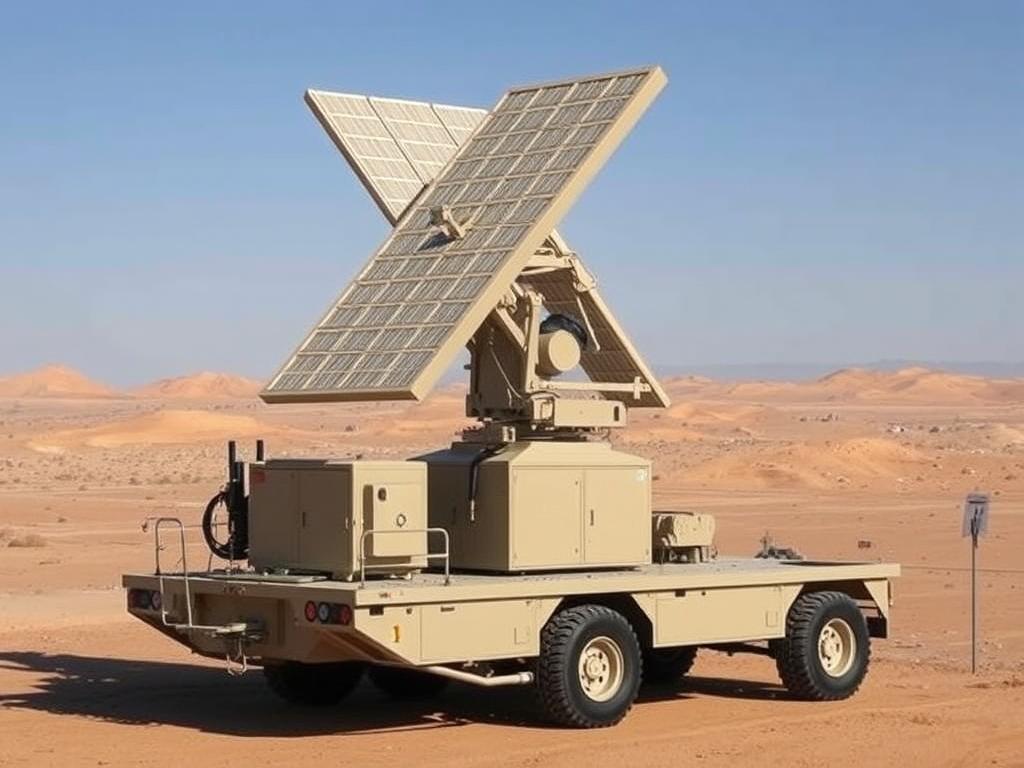
The ELM-2084 Multi-Mission Radar can track up to 1,100 targets simultaneously
The Brain: Battle Management & Weapon Control System
Once the radar detects a potential threat, the Battle Management & Weapon Control (BMC) system springs into action. Developed by mPrest Systems, this sophisticated software is the decision-making brain of the Iron Dome.
Within seconds, the BMC analyzes the trajectory of the incoming projectile, calculates its projected impact point, and makes a critical determination: does this threat pose a danger to populated areas or strategic assets? If the answer is yes, the system immediately calculates the optimal interception point and commands a launcher to fire.
As IDF Colonel (Ret.) Eran Ortal explains: “The BMC system doesn’t just react – it thinks. It must make life-or-death decisions in seconds, distinguishing between threats that require interception and those that will land in unpopulated areas.”

Iron Dome operators monitoring threats in the Battle Management Control center
The Sword: Tamir Interceptor Missiles
The final component of the Iron Dome is its interceptor – the Tamir missile. Each missile is approximately 3 meters long, 16 centimeters in diameter, and weighs about 90 kilograms at launch. These precision weapons are housed in mobile launch units, with each launcher capable of holding up to 20 interceptors.
The Tamir isn’t just a simple rocket – it’s a sophisticated guided weapon equipped with multiple steering fins for high maneuverability, an active radar seeker for terminal guidance, and a proximity-fuse blast-fragmentation warhead designed to detonate near the target rather than through direct impact.
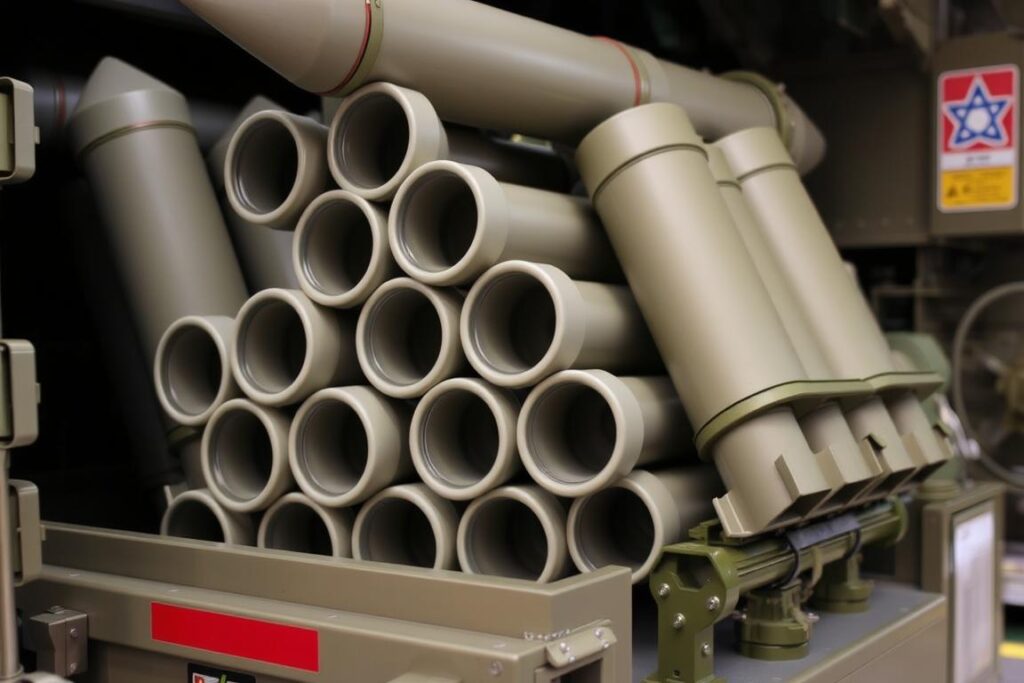
Tamir interceptor missiles loaded in a mobile launcher unit
Want to understand missile defense systems better?
Download our free infographic “Missile Defense Systems Explained” to learn how different countries protect their airspace from various threats.
The Iron Dome in Action: Operation Process
The Iron Dome’s operation is a masterclass in split-second decision making and precision engineering. From initial detection to successful interception, the entire process takes place in mere seconds – often with human lives hanging in the balance.
The Science Behind Interception
When a rocket, missile, or drone is launched toward Israel, the Iron Dome’s radar immediately detects the launch and begins tracking the projectile. The system’s sophisticated algorithms analyze the trajectory and speed of the incoming threat, calculating its projected impact point with remarkable precision.
If the system determines that the projectile will land in an unpopulated area, it may choose not to intercept – a cost-saving measure that preserves interceptors for genuine threats. However, if the threat is headed toward a populated area or strategic asset, the BMC system calculates the optimal interception point and commands a launcher to fire.

The complete Iron Dome operation process from detection to interception
The Tamir interceptor is then launched toward the calculated interception point. During flight, the missile receives continuous updates from the BMC system while also using its onboard radar seeker for terminal guidance. When the interceptor reaches proximity to the threat, its warhead detonates, creating a cloud of fragments that neutralize the incoming projectile.
Dr. Uzi Rubin, former head of Israel’s Missile Defense Organization, notes: “What makes the Iron Dome unique is not just its ability to intercept threats, but its ability to discriminate between threats that require interception and those that don’t. This selective approach is both cost-effective and tactically sound.”
Response Time: A Race Against Gravity
Perhaps the most impressive aspect of the Iron Dome is its incredibly short response time. From initial detection to interception, the entire process typically takes less than 30 seconds. For threats launched from nearby Gaza, the system may have as little as 15 seconds to complete the entire detection-decision-interception sequence.
This rapid response capability is crucial when defending against short-range rockets, which may have flight times of less than a minute from launch to impact. The system must detect, analyze, decide, and intercept within this narrow window – a technological feat that was considered nearly impossible before the Iron Dome’s development.
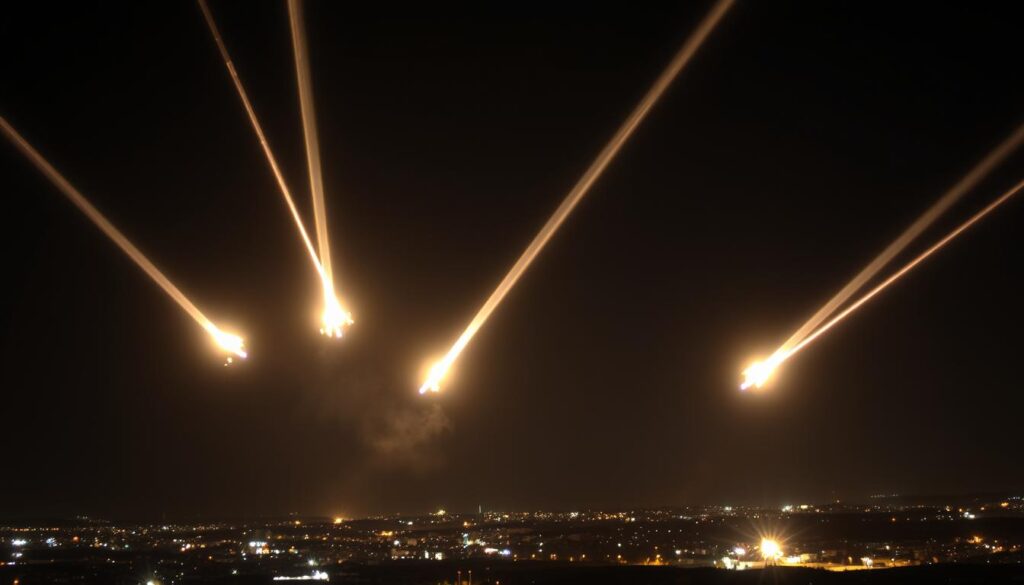
Multiple Iron Dome interceptors engaging incoming rockets during a nighttime attack
Effectiveness: Success Rates and Real-World Performance
Since its deployment in 2011, the Iron Dome has been put to the test repeatedly during conflicts with Hamas and other militant groups. Its performance has been closely scrutinized by military analysts worldwide, with most agreeing that the system has dramatically altered the strategic landscape.
Statistical Success
According to official Israeli figures, the Iron Dome has maintained an impressive interception success rate of approximately 90% against threats targeted for interception. During the 2014 Israel-Gaza conflict, the system reportedly intercepted 735 out of 800 rockets identified as threatening – a 90% success rate. More recently, during the May 2021 conflict, Israeli officials claimed the system achieved a 90-95% success rate against the rockets selected for interception.
It’s important to note that these figures represent success rates against rockets that the system determined needed to be intercepted – not against all rockets fired. The Iron Dome is designed to ignore rockets projected to land in unpopulated areas, which can represent 20-33% of all rockets fired.
Historical Use Cases
The Iron Dome has been battle-tested in several major conflicts:
| Conflict | Year | Rockets Fired | Rockets Intercepted | Success Rate |
| Operation Pillar of Defense | 2012 | ~1,500 | ~400 | 85% |
| Operation Protective Edge | 2014 | ~4,500 | ~735 | 90% |
| May 2021 Conflict | 2021 | ~4,000 | ~1,428 | 95% |
| October 2023 Attack | 2023 | Hundreds | Majority of threats | ~90% |
Why the Iron Dome Isn’t Perfect
Despite its impressive track record, the Iron Dome does have limitations. The system can be overwhelmed by massive barrages of rockets fired simultaneously – a tactic that Hamas and other groups have attempted to exploit. Additionally, very short-range threats launched from extremely close proximity may not provide enough time for interception.
Cost is another significant factor. Each Tamir interceptor missile costs between $40,000 and $50,000, while many of the rockets they target cost less than $1,000 to produce. This cost asymmetry creates a challenging economic equation, especially during prolonged conflicts.
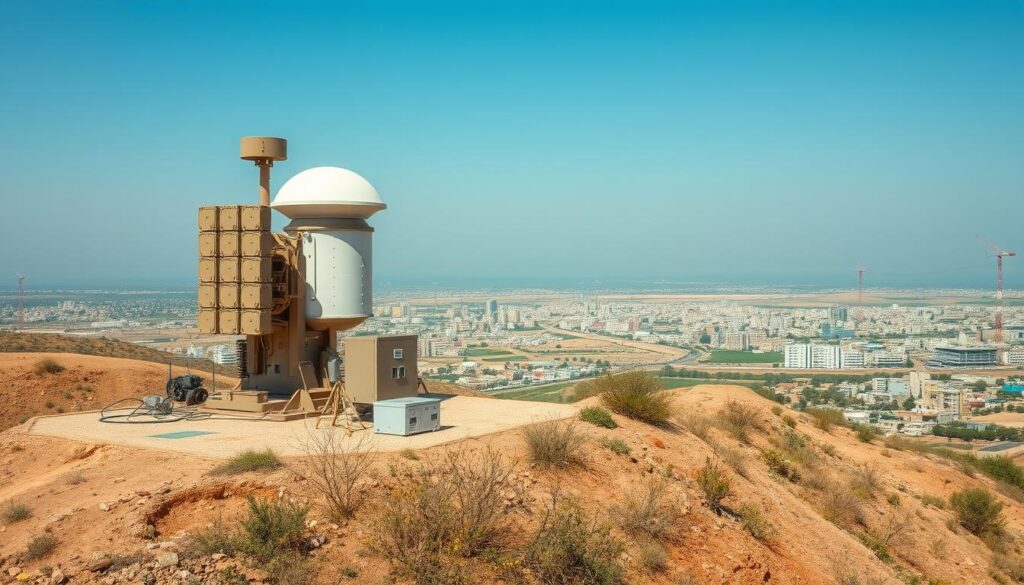
Iron Dome battery strategically positioned to protect an Israeli city
Iron Dome Strengths
- High interception success rate (~90%)
- Selective engagement saves interceptors
- Rapid response time (15-30 seconds)
- Mobile deployment flexibility
- Proven effectiveness in multiple conflicts
- Adaptable to various threat types
Iron Dome Limitations
- High cost per interceptor ($40,000-$50,000)
- Vulnerable to saturation attacks
- Limited effectiveness against very short-range threats
- Requires multiple batteries for complete coverage
- Not designed for long-range ballistic missiles
- Significant maintenance and operational costs
Global Interest: Iron Dome’s International Impact
The Iron Dome’s remarkable success has generated significant international interest, with several countries exploring similar technology or seeking to acquire the system directly. While Israel has been selective about sharing the technology, the system’s impact on global missile defense thinking is undeniable.
United States Cooperation
The United States has been deeply involved with the Iron Dome program, providing significant funding and technical cooperation. Since 2011, the U.S. has contributed approximately $1.6 billion to the development and production of the system. In 2019, the U.S. Army purchased two Iron Dome batteries as an interim solution for its indirect fires protection capability (IFPC) program.
Raytheon, an American defense contractor, partnered with Rafael in 2014 for the supply of Tamir interceptor components. In 2020, the two companies formed a joint venture called Raytheon Rafael Area Protection Systems to establish an Iron Dome production facility in the United States.
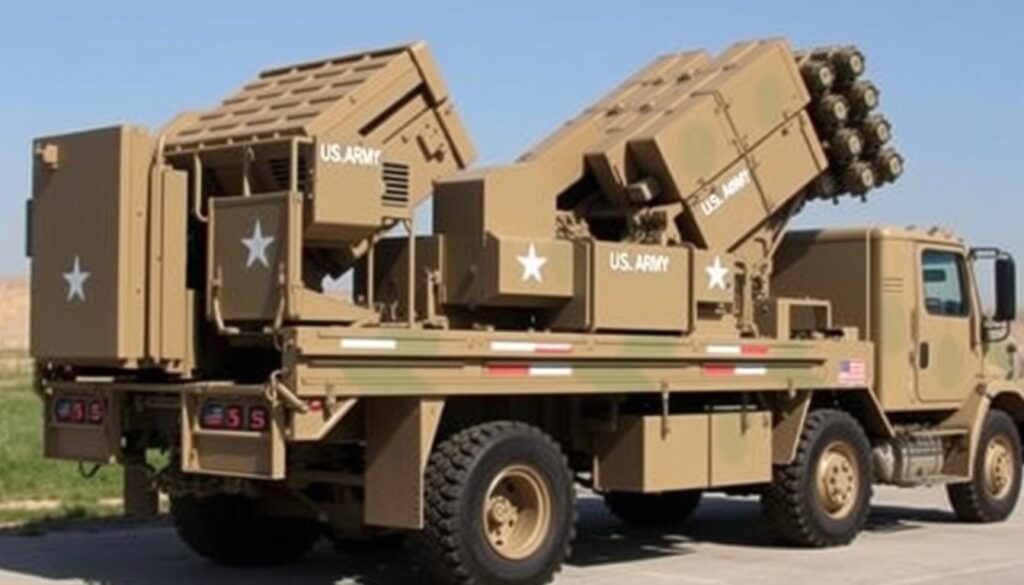
U.S. Army Iron Dome battery mounted on an American military transport truck
Other International Interest
Several other countries have expressed interest in acquiring or developing similar technology:
Romania
In 2018, Romania’s Romaero partnered with Rafael for cooperation in the production of the Iron Dome system in Romania.
Azerbaijan
Azerbaijan has reportedly signed deals for the purchase of the Iron Dome system to enhance its air defense capabilities.
India
India has shown interest in the Iron Dome technology as part of its broader missile defense strategy against regional threats.
Additionally, several European countries are in discussions with Israel regarding potential acquisition of the system or its technology. The system’s proven effectiveness makes it an attractive option for nations facing similar short-range rocket or missile threats.
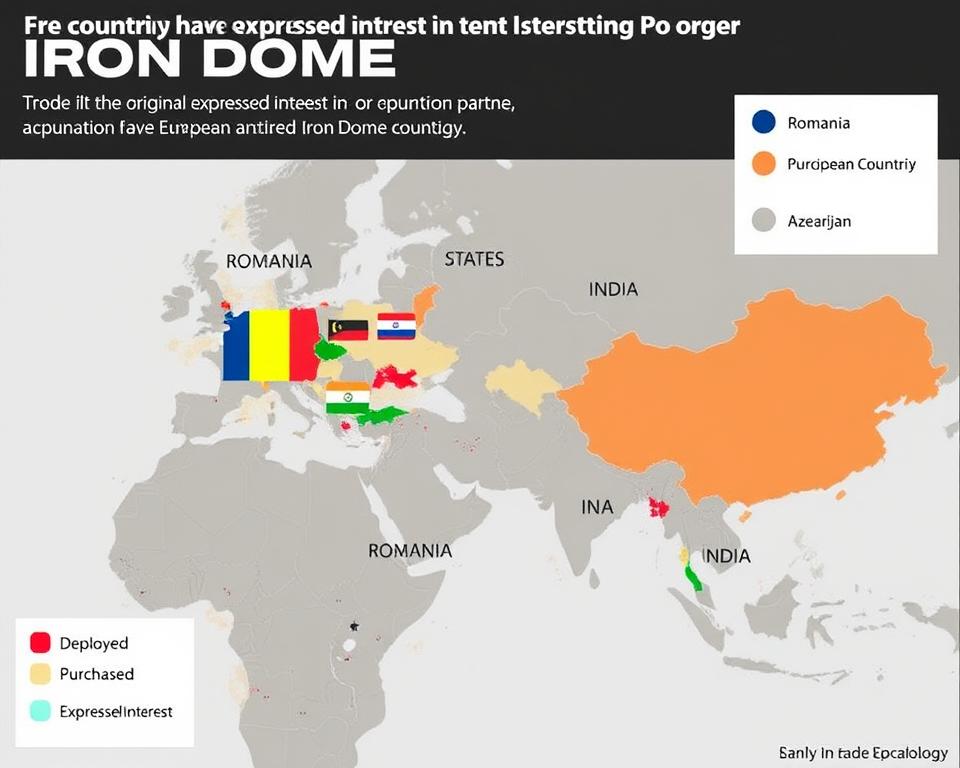
Global interest in Iron Dome technology (countries that have expressed interest or made purchases)
Stay Updated on Defense Technology
Subscribe to our newsletter for the latest developments in missile defense systems and military technology from around the world.
Conclusion: The Strategic Importance of Iron Dome
The Iron Dome represents more than just a technological achievement – it’s a strategic game-changer that has fundamentally altered the security equation for Israel. By providing effective protection against short-range rockets and other aerial threats, the system has reduced the effectiveness of one of the primary weapons used against Israeli civilians.
Before the Iron Dome’s deployment, rocket attacks from Gaza or Lebanon could effectively shut down large portions of Israel, forcing civilians into shelters and disrupting daily life. Today, while the psychological impact of attacks remains significant, the physical danger has been dramatically reduced.
As IDF Major General (Ret.) Yaakov Amidror notes: “The Iron Dome has changed the strategic calculus. It has given Israel’s leadership more options and more time to make decisions during conflicts, rather than being forced to respond immediately to rocket attacks.”

Iron Dome interceptors creating a protective shield over an Israeli city during a nighttime attack
Beyond its immediate defensive value, the Iron Dome has also influenced military doctrine and strategic thinking worldwide. It has demonstrated that active defense against short-range threats is possible – something many military experts considered impractical before the system’s success.
As missile and drone technology continues to proliferate globally, the lessons learned from the Iron Dome’s development and deployment will likely influence the next generation of air defense systems around the world, potentially reshaping how nations approach territorial defense in the 21st century.
Frequently Asked Questions About the Iron Dome
How much does each Iron Dome interceptor missile cost?
Each Tamir interceptor missile costs between ,000 and ,000. This is significantly more expensive than many of the rockets they target, which can cost less than
Frequently Asked Questions About the Iron Dome
How much does each Iron Dome interceptor missile cost?
Each Tamir interceptor missile costs between $40,000 and $50,000. This is significantly more expensive than many of the rockets they target, which can cost less than $1,000 to produce, creating a challenging cost equation during prolonged conflicts.
What is the response time of the Iron Dome system?
The Iron Dome system has an extremely rapid response time, typically completing the entire detection-decision-interception sequence in less than 30 seconds. For threats launched from nearby Gaza, the system may have as little as 15 seconds to complete the entire process.
How many Iron Dome batteries does Israel currently have?
Israel currently operates approximately 10 Iron Dome batteries deployed throughout the country. Each battery contains 3-4 launchers with 20 Tamir interceptors each, allowing for the protection of an area of approximately 60 square miles.
Can the Iron Dome intercept drones and cruise missiles?
Yes, the Iron Dome has been upgraded to intercept a variety of aerial threats beyond rockets, including drones and cruise missiles. During the May 2021 conflict, the system successfully intercepted five drones launched from Gaza, demonstrating this expanded capability.
Who developed the Iron Dome system?
The Iron Dome was primarily developed by Rafael Advanced Defense Systems, an Israeli defense technology company. The radar system was developed by Elta, another Israeli defense company, while the control system software was created by mPrest Systems. The United States has provided significant funding and technical cooperation since 2011.
Where can I learn more about missile defense systems?
For more information about missile defense systems, including the Iron Dome, you can download our comprehensive guide using the button below.
,000 to produce, creating a challenging cost equation during prolonged conflicts.
What is the response time of the Iron Dome system?
The Iron Dome system has an extremely rapid response time, typically completing the entire detection-decision-interception sequence in less than 30 seconds. For threats launched from nearby Gaza, the system may have as little as 15 seconds to complete the entire process.
How many Iron Dome batteries does Israel currently have?
Israel currently operates approximately 10 Iron Dome batteries deployed throughout the country. Each battery contains 3-4 launchers with 20 Tamir interceptors each, allowing for the protection of an area of approximately 60 square miles.
Can the Iron Dome intercept drones and cruise missiles?
Yes, the Iron Dome has been upgraded to intercept a variety of aerial threats beyond rockets, including drones and cruise missiles. During the May 2021 conflict, the system successfully intercepted five drones launched from Gaza, demonstrating this expanded capability.
Who developed the Iron Dome system?
The Iron Dome was primarily developed by Rafael Advanced Defense Systems, an Israeli defense technology company. The radar system was developed by Elta, another Israeli defense company, while the control system software was created by mPrest Systems. The United States has provided significant funding and technical cooperation since 2011.
Where can I learn more about missile defense systems?
For more information about missile defense systems, including the Iron Dome, you can download our comprehensive guide using the button below.